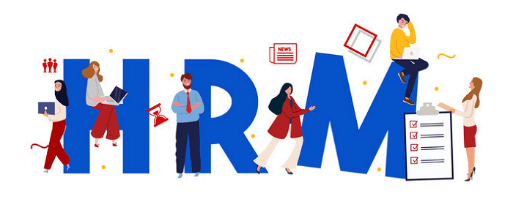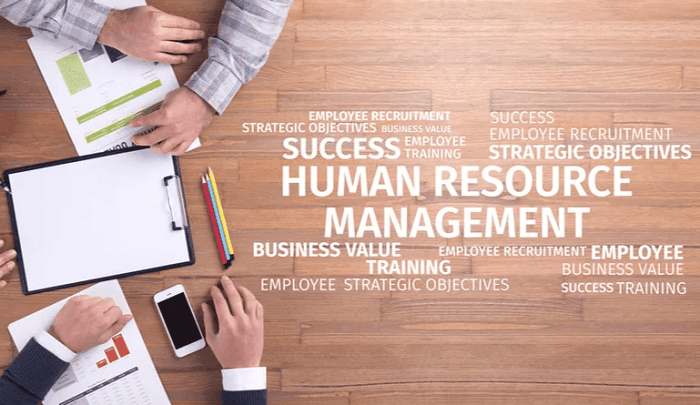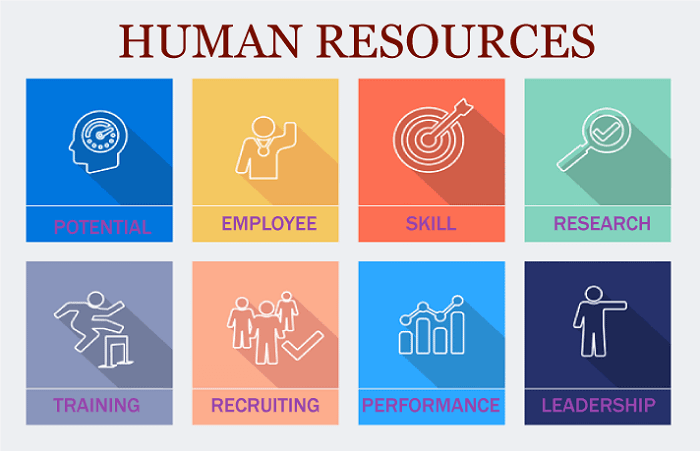Human Resource Management DefinitionHuman Resource Management (HRM) manages a business's workforce. It is responsible for hiring, training, developing, compensating employees, and overseeing and administering employee benefits. HRM is a broad field that encompasses many activities, such as hiring and firing, performance management, compensation, and benefits. 
Definition of Human Resource ManagementThe process of finding, hiring, onboarding, teaching, developing, paying workers, and managing employee perks is known as human resource management. It also includes the development of organizational culture, employee engagement, and workplace safety. HRM is a critical component of any successful organization, as it ensures that the company has the right people in the right roles to meet its goals and objectives. Basic Elements of Human Resource Management (HRM)A set of rules and procedures called human resource management (HRM) is used to manage people in a company. It is a discipline of research and application devoted to efficiently managing company personnel. HRM focuses on employee recruitment, development, retention, and utilization to achieve organizational goals. Recruitment and screening, training and development, pay and perks, performance management, employee relations, and regulatory compliance are the major components of HRM.
HRM involves effectively managing people within an organization to achieve organizational goals. It involves recruiting, developing, retaining, and utilizing employees to ensure the organization is successful. Importance of Human Resource ManagementManagement of human resources is crucial to the success of any firm. It aids in ensuring that each employee is treated fairly and with respect and that the company can draw in and keep the greatest talent. Moreover, it ensures that the business has the appropriate policies and processes and complies with all applicable labour laws and regulations. Moreover, HRM contributes to the development of a culture and workplace that is conducive to employee success. HRM ActivitiesSeveral activities fall under the preview of HRM. These activities include:
Difference Between Personnel Management and Human resource ManagementPersonnel and Human resource management are often used interchangeably, but they are distinct in their scope and purpose. Personnel management is the conventional method of managing workers and interactions within a company. Human resource management, meanwhile, is a cutting-edge strategy that emphasizes optimizing employee performance in support of an organization's aims and purposes. 
Personnel management is a system for managing people in an organization, ensuring that the right people are hired for the right job and supported and managed to do their best work. It is focused on the administrative aspects of employee relations, such as payroll, benefits, and compliance with labor laws and regulations. Personnel management traditionally involves the recruitment, selection, and training of employees. The system works best when considered in the context of the whole organization, not the individual employees. Human Resource Management is a more modern approach that considers the organization's larger goals and objectives and is focused on maximizing the performance of employees. It goes beyond the administrative aspects of personnel management and considers the development of employees and their relationship with the organization. The main goals of human resource management are to create a productive workplace and to recruit, select, train, and develop personnel. Managing employee performance and giving feedback and credit for their efforts are additional tasks. The distinctions between human resource management and employees are best demonstrated by their different focuses: Human resource management is focused on the company as a whole. In contrast, personnel management is focused on specific workers. Administrative duties like salary and perks are the main emphasis of personnel management. In contrast, human resource management aims to maximize employee performance and help people realize their full potential. Finally, Personnel management is focused on compliance with labor laws and regulations, whereas Human Resource Management is focused on creating a positive working environment and providing feedback and recognition. We can say that personnel management and human resource management are two unique strategies for overseeing the workforce inside a business, each with a specific goal in mind. Human resource management is concerned with the organization and optimizing employee performance, whereas personnel management concentrates on particular workers and their administrative requirements. To guarantee an organization's success, both strategies are required. Who is Responsible for HR Management?HR management oversees an organization's personnel to optimize employee potential, recognize and develop their talents, and ensure the correct individual works properly. It covers a variety of tasks, including recruiting, conducting interviews, evaluating performance, managing employee relations, providing benefits, planning the workforce, and training and development.
Overall, HR management is a complex and multi-faceted process that requires many stakeholders' collaboration to succeed. The HR department and line managers must ensure that the organization's HR policies are implemented effectively and its workforce is managed to maximize its potential. Evolution of Human Resource Management
What is the purpose of Human Resource Management?The goal of human resource management (HRM) is to optimize an organization's workforce's effectiveness and guarantee that the Management of the business's human capital is advantageous to both the organization and its employees. This entails finding and retaining the best candidates, nurturing and keeping talent, paying fairly and equally, monitoring performance, and fostering a healthy work environment. Managing employee rights and obligations, health and safety, and benefits are all included in HRM. Skills and Qualifications Required to be an HR?Skills and qualifications required to be a Human Resources (HR) professional include: 
Hiring Role of Human Resource Management (HRM)Human Resource Management (HRM) is a process of recruiting, selecting, and inducting employees, providing orientation, imparting training and development, determining and managing compensation, providing benefits, and appraising performance to ensure that employees can achieve the organizational objectives. HRM involves recruiting and selecting the right candidates to fill the vacancies available and ensure the availability of the required number of people with the right skills for the organization. It also includes training and development of the selected candidates to increase their efficiency and productivity. The HRM process also involves monitoring the performance of employees and taking corrective action if needed. The recruitment process starts with identifying the need for an employee to fill a specific job. After this, the next step is to advertise the vacancy through various sources such as newspapers, the internet, magazines, and other media. After the advertisement, the applicants should be screened and shortlisted based on their qualifications and experience. The final step of the recruitment process is selecting the most suitable candidate for the job. The selected candidate should receive proper induction and orientation to the job and organization. The HRM should also provide training and development for the employees to keep them updated about the latest industry trends and changes and enhance their skills. The HRM should also monitor and evaluate the performance of the employees and take corrective action if necessary.
Next TopicHypertension Definition
|
 For Videos Join Our Youtube Channel: Join Now
For Videos Join Our Youtube Channel: Join Now
Feedback
- Send your Feedback to [email protected]
Help Others, Please Share










